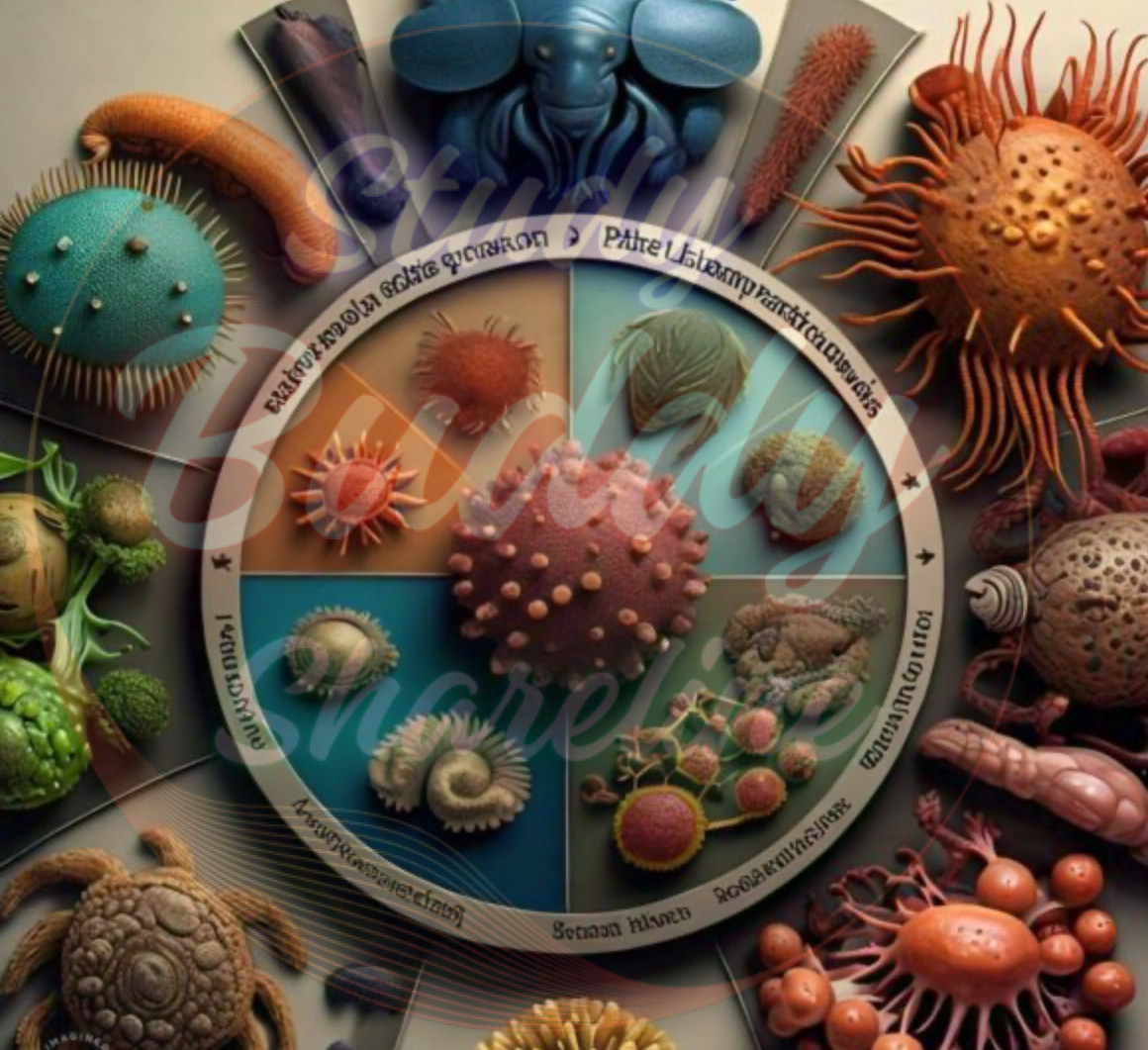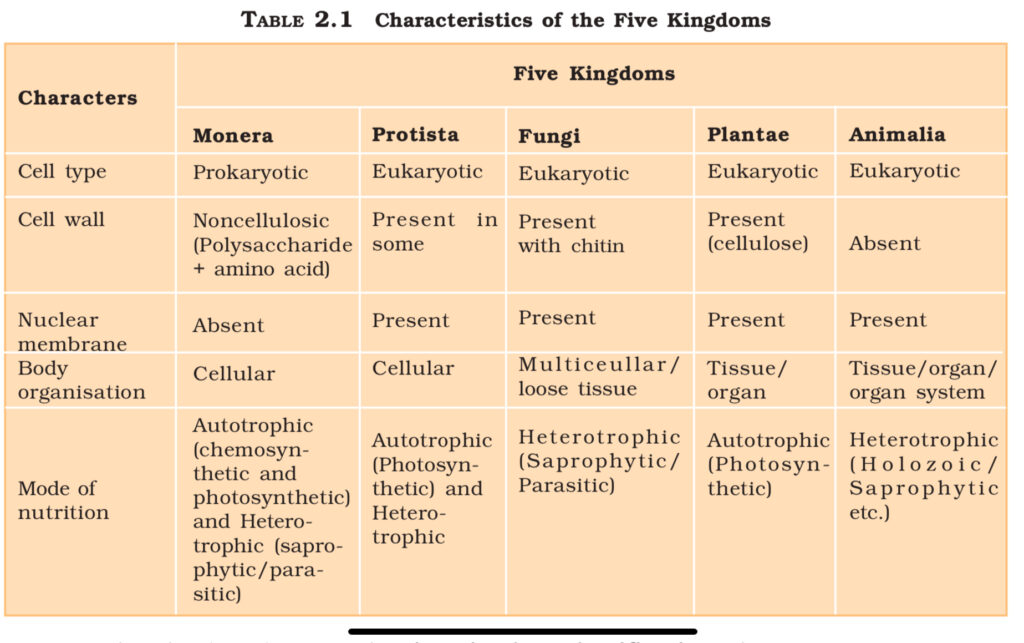Five Kingdom Classification

/
Five Kingdom Classification (R.H. Whittaker – 1969)
- Key Features:
- Kingdoms: Monera, Protista, Fungi, Plantae, Animalia.
- Classification criteria:
- Cell structure (prokaryotic vs. eukaryotic)
- Body organization (unicellular vs. multicellular)
- Mode of nutrition (autotrophic vs. heterotrophic)
- Reproduction
- Phylogenetic relationships (evolutionary history)
- Why a new system?
- Limitations of older systems:
- Grouped prokaryotes (bacteria, blue-green algae) with eukaryotes.
- Mixed unicellular and multicellular organisms.
- Didn’t distinguish between heterotrophic fungi and autotrophic plants despite cell wall differences (chitin in fungi, cellulose in plants).
- Whittaker’s system addressed these issues by:
- Separating prokaryotes into Kingdom Monera.
- Creating Kingdom Protista for unicellular eukaryotes.
- Recognizing fungi as a distinct kingdom (Fungi).
- Limitations of older systems:
- Kingdom Protista:
- A diverse kingdom including organisms like:
- Chlamydomonas and Chlorella (previously classified as algae)
- Paramecium and Amoeba (previously classified as animals)
- This grouping reflects the change in classification criteria, emphasizing cell structure and mode of nutrition over simple morphology.
- A diverse kingdom including organisms like:
- Evolution of Classification Systems:
- Classification systems are not static; they change with improved understanding of:
- Organism characteristics
- Evolutionary relationships
- Modern systems aim to be phylogenetic, reflecting evolutionary history.
- Classification systems are not static; they change with improved understanding of:
- Three-Domain System:
- An alternative system that further divides Monera into two domains.
- Creates a six-kingdom classification.
- Will be explored in higher classes.
- Note: This chapter focuses on Monera, Protista, and Fungi. Plantae and Animalia will be covered separately.
- Table from NCERT

